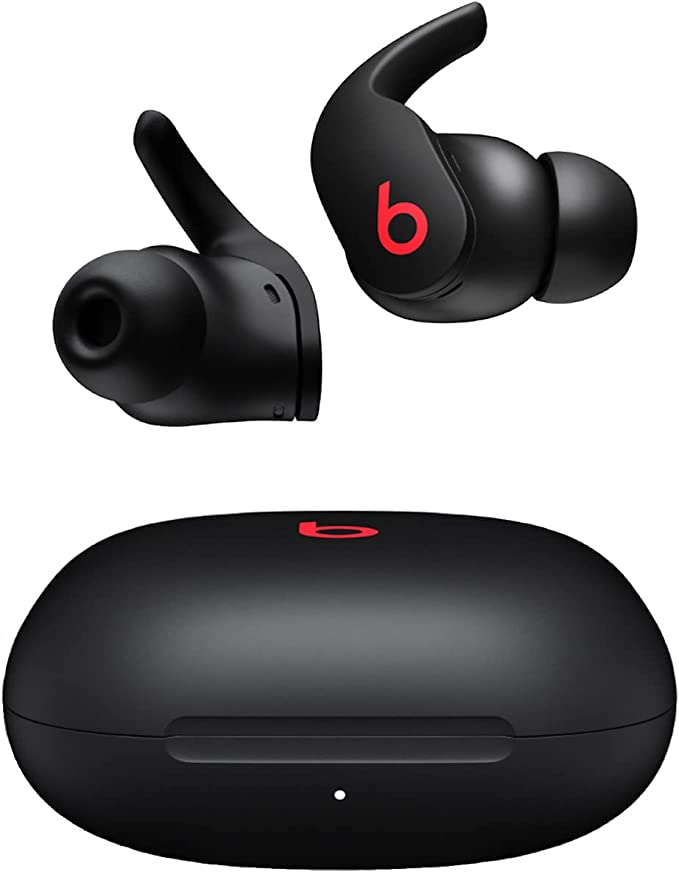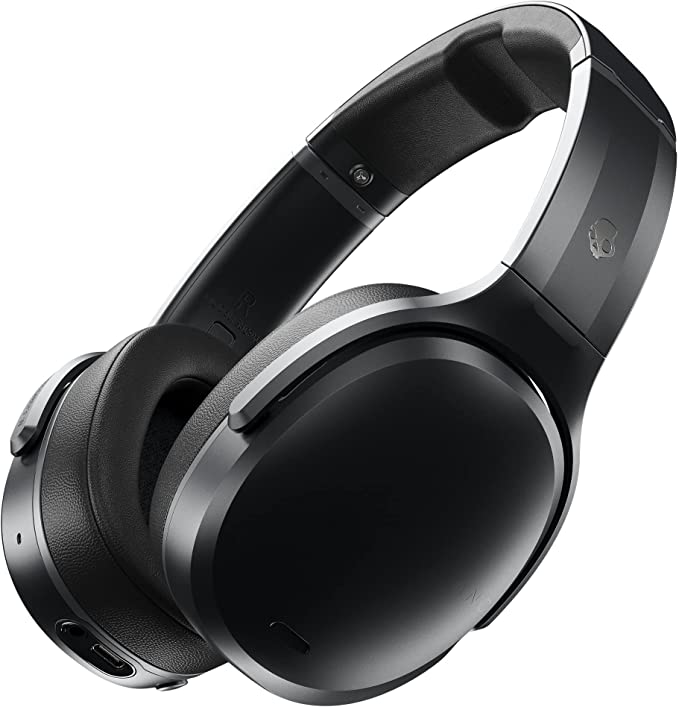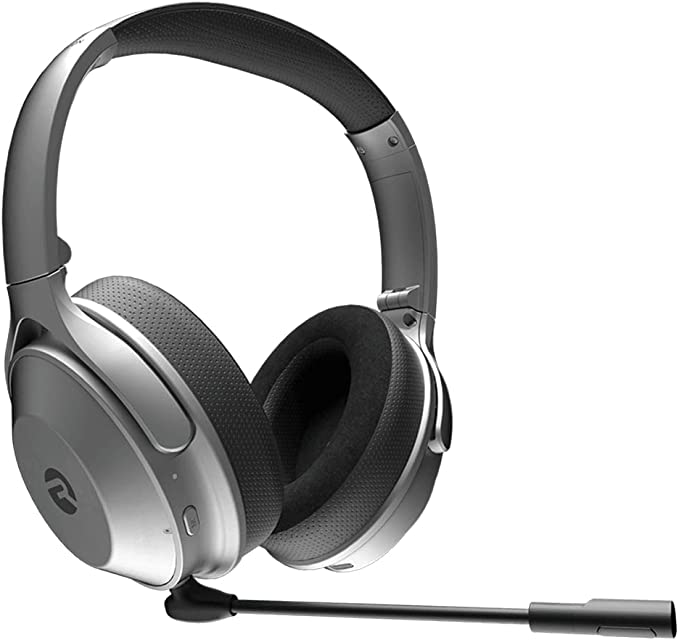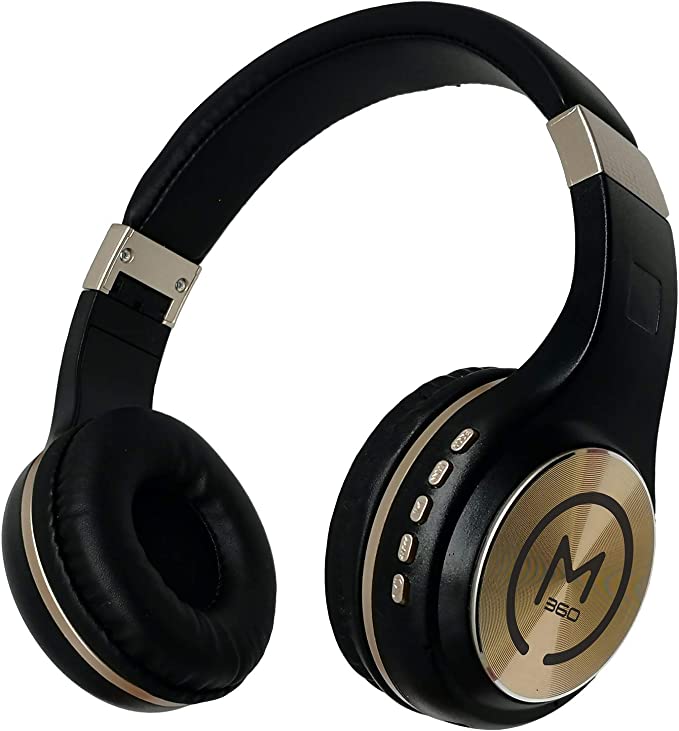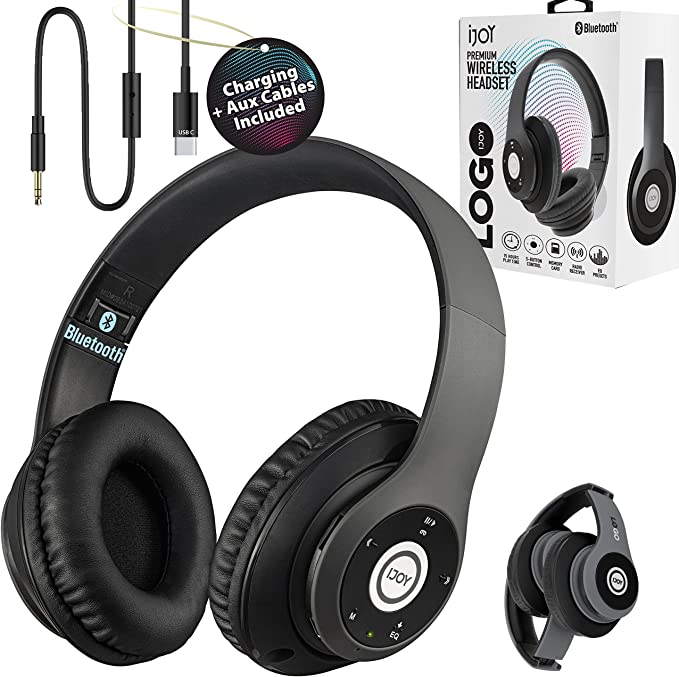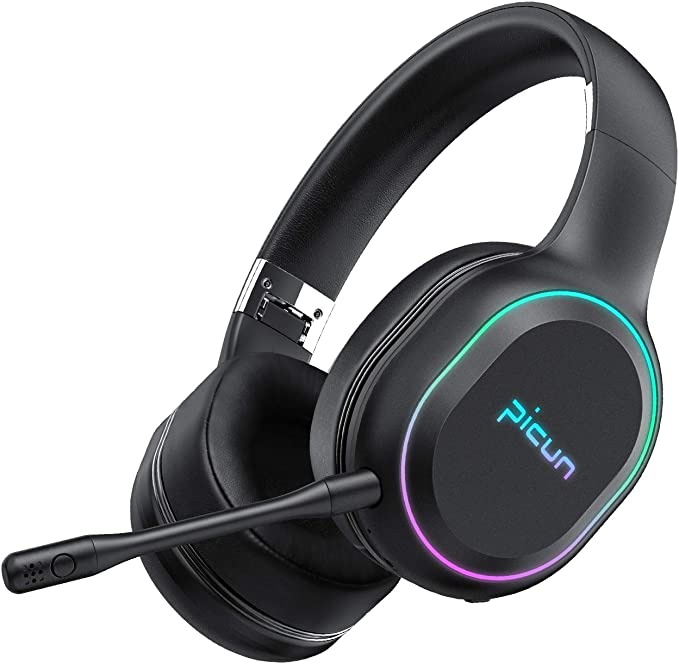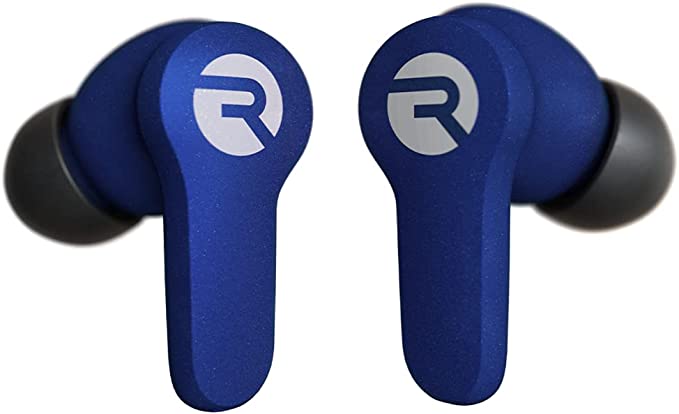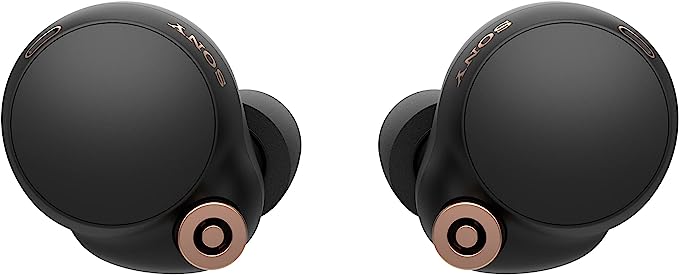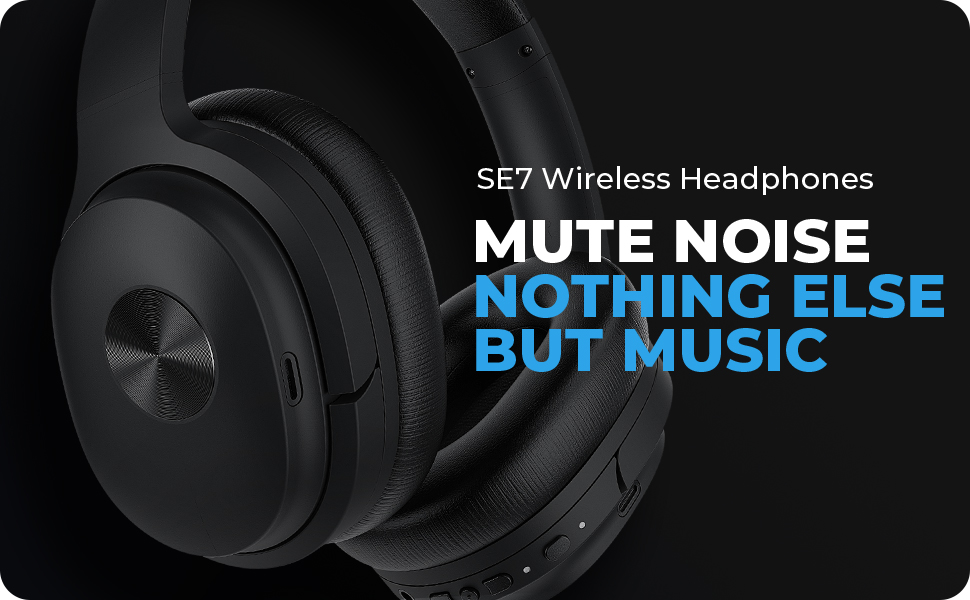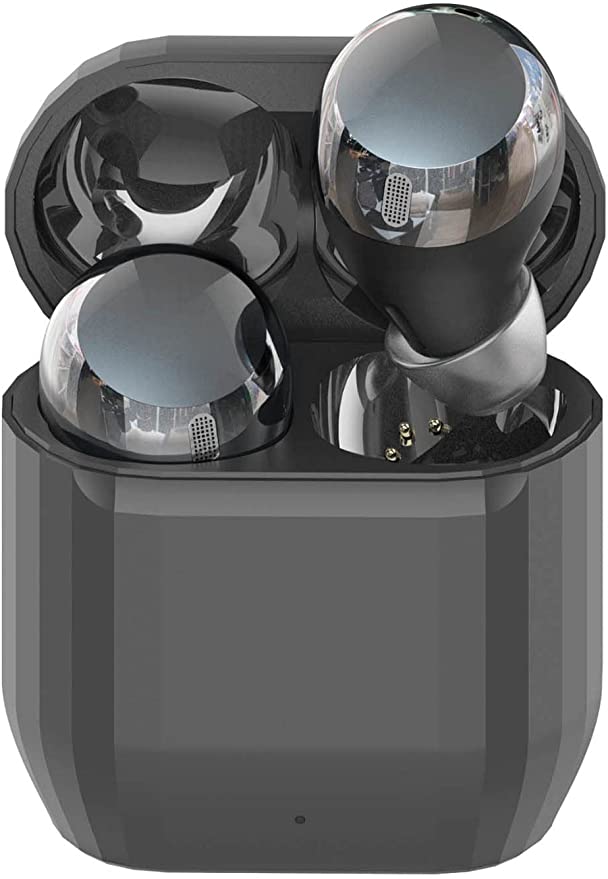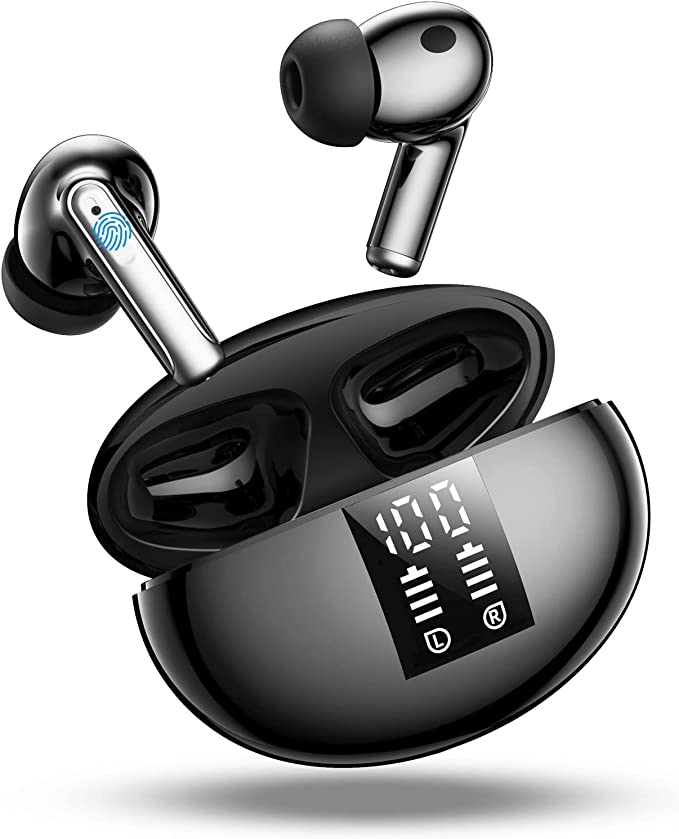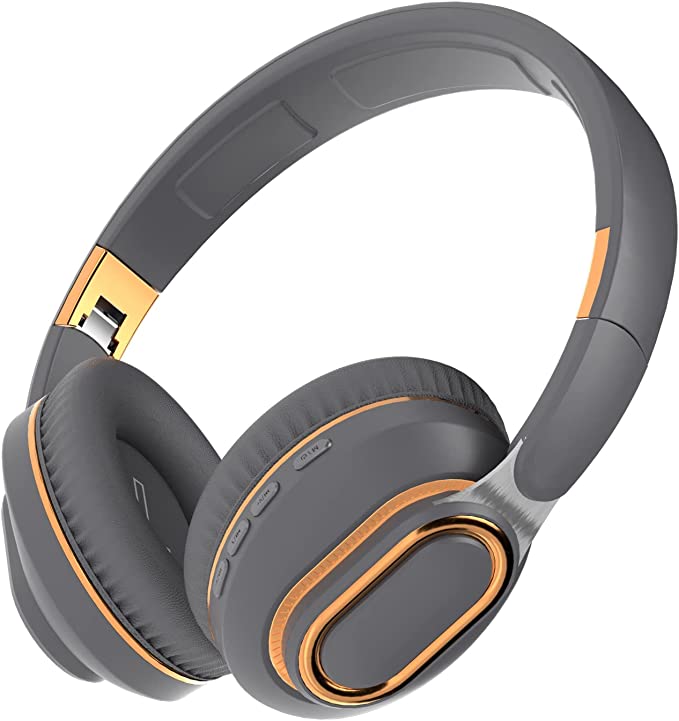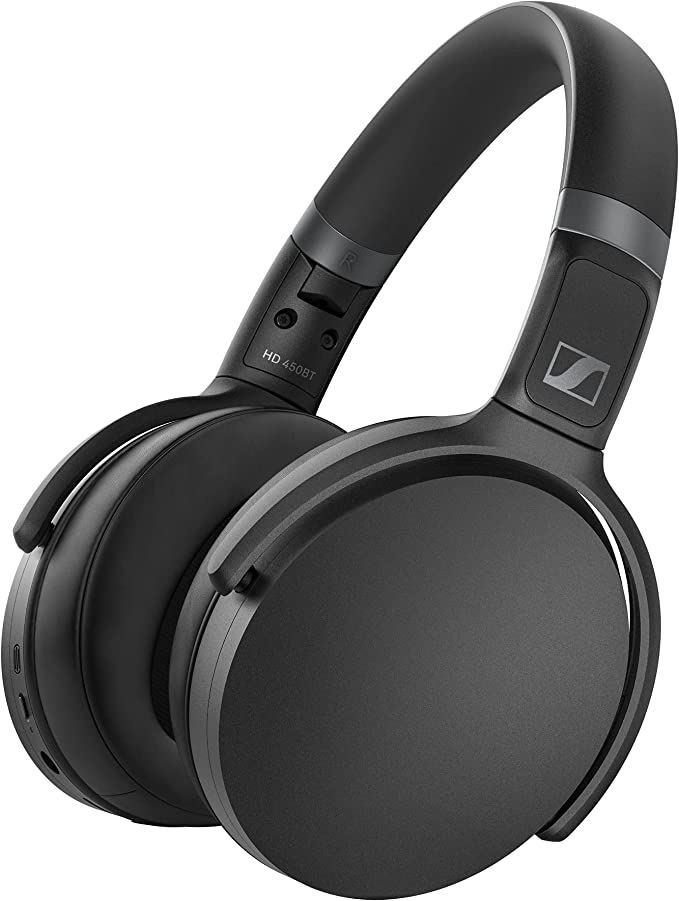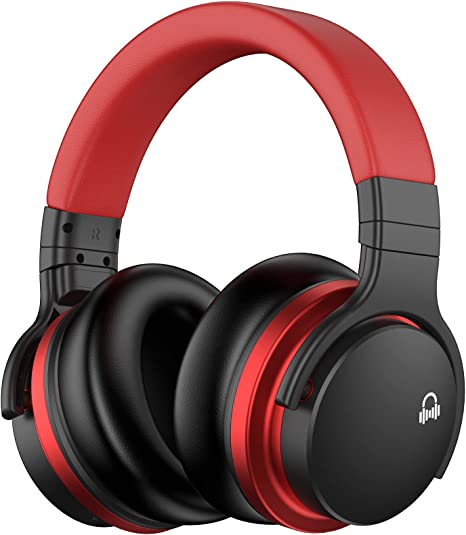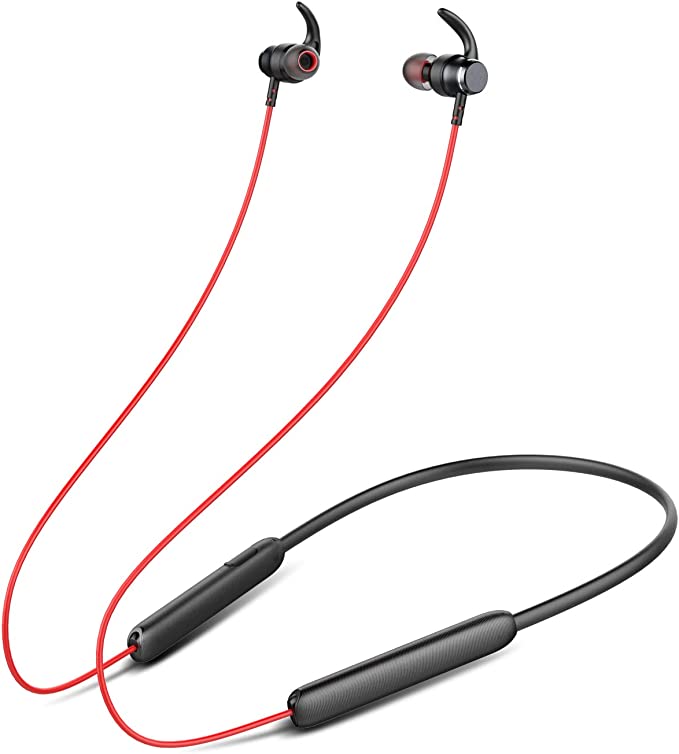Shure AONIC 50 Gen 2: Unveiling the Science of Premium Wireless Sound, Noise Cancellation, and Spatial Audio
Update on May 29, 2025, 1:46 p.m.
The Unfolding Soundscape: Beyond Silence, Beyond Wires
In our hyper-connected, often cacophonous world, the quest for a personal haven of sound—a space where audio is not just heard, but felt and experienced in its purest form—has become more fervent than ever. We crave an escape, a bubble of pristine auditory experience, whether navigating bustling cityscapes, focusing in a busy office, or simply surrendering to the power of music at home. It’s this fundamental human desire for immersive, high-fidelity audio, untethered by wires and undisturbed by the world, that drives innovation in personal audio technology. Standing at this intersection of acoustic artistry and cutting-edge engineering are devices like the Shure AONIC 50 Gen 2 Wireless Headphones (Model: SBH50G2-BK). Drawing from a profound legacy in professional audio, Shure aims to deliver not merely a pair of headphones, but a meticulously crafted auditory instrument designed to transport the listener. This exploration delves into the symphony of science and engineering that allows these headphones to sculpt your personal soundscape, transforming everyday listening into an extraordinary experience.

The Acoustic Heart: Crafting Reality from Current
At the very core of any headphone, the component that breathes life into electrical signals and transforms them into the sound waves that stir our emotions, is the driver. The Shure AONIC 50 Gen 2 employs custom-engineered 50mm dynamic drivers, and this choice of size and type is fundamental to its acoustic signature. But what does this actually mean for your ears?
Imagine a dynamic driver as a miniature, precision-engineered loudspeaker. Its operation is a beautiful dance of electromagnetism: an electrical audio signal flows through a voice coil attached to a diaphragm (a thin, responsive membrane). This coil is suspended within a magnetic field created by a permanent magnet. As the audio current fluctuates, it generates a changing magnetic field around the voice coil, causing it to rapidly vibrate back and forth in precise synchrony with the music’s rhythm and nuance. These vibrations are transferred to the larger surface of the diaphragm, which then pushes and pulls the air, creating the sound waves that travel to your eardrum.
The “50mm” designation refers to the diameter of this critical diaphragm. In the world of acoustics, size often matters. A larger diaphragm, like the one in the AONIC 50 Gen 2, can generally move a greater volume of air more efficiently than a smaller one. This physical advantage is particularly noticeable in the reproduction of low frequencies, allowing for bass that is not just loud, but also deep, textured, and controlled, without the muddiness that can plague lesser designs. Furthermore, a larger driver can often handle higher sound pressure levels with less distortion, contributing to an effortless sense of power and a more open, expansive sound.
Shure’s assertion of “premium, studio-quality sound” is more than marketing; it reflects a deeply ingrained tuning philosophy born from decades of experience crafting microphones and monitoring tools for the world’s most demanding recording artists and audio engineers. “Studio-quality” in this context implies a commitment to sonic accuracy and neutrality. The goal is not to artificially color the sound with exaggerated bass or overly bright treble, but to reproduce the audio as faithfully as possible to the original recording. This means a balanced frequency response, allowing you to hear the delicate shimmer of a cymbal, the rich warmth of a cello, the subtle inflections in a human voice, and the precise placement of instruments within a complex mix—all with clarity and detail. It’s about critical listening, about unveiling the layers within the music, a characteristic Shure has honed through its long-standing presence in professional audio environments where such fidelity is not a luxury, but a necessity.

Your Sonic Fingerprint: The Empowering Science of Customizable Sound
While a neutral, studio-reference sound provides an ideal starting point for many, the beauty of personal audio lies in its very name: it’s personal. Our hearing, our musical tastes, and even the environments we listen in are wonderfully diverse. Recognizing this, the Shure AONIC 50 Gen 2 empowers users to sculpt their auditory experience through a customizable equalizer (EQ) accessible via the free ShurePlus™ PLAY app. This isn’t just about tweaking bass and treble; it’s about applying sophisticated Digital Signal Processing (DSP) to tailor the sound to your exact preferences.
Think of DSP as an invisible, highly intelligent audio engineer residing within the headphones’ circuitry. When you adjust the EQ, you’re essentially instructing this DSP to alter the amplitude, or loudness, of specific frequency ranges within the audio signal. The ShurePlus PLAY app likely offers a parametric equalizer, which is a particularly powerful tool. Unlike simpler graphic EQs that offer fixed frequency bands, a parametric EQ gives you granular control over three key aspects for each adjustable band:
1. Frequency: You can select the precise center frequency you wish to modify (e.g., boosting the sub-bass at 60 Hz or tempering a peak in the upper midrange at 3 kHz).
2. Gain: You can determine exactly how much you want to boost (increase) or cut (decrease) the selected frequency, measured in decibels (dB).
3. Q (Quality Factor): This crucial parameter defines the bandwidth, or how wide or narrow the range of affected frequencies is around your chosen center frequency. A high Q value creates a very narrow, surgical adjustment, affecting only a small sliver of sound. A low Q value results in a broader, more gentle adjustment across a wider range of frequencies.
This level of precision allows for everything from subtle refinements to dramatic reshaping of the sound signature. You might choose a preset EQ curve designed for a specific genre like “Rock” or “Classical,” or you could dive in and create your own unique profile, perhaps to compensate for slight hearing variations or to bring out a particular instrument in a favorite track. A truly convenient aspect of the AONIC 50 Gen 2’s design is that these custom EQ profiles can be saved directly to the headphones themselves. This means your preferred sound signature “travels” with the headphones, applied consistently regardless of which app or source device you’re using for playback – your personalized sound, always at the ready.

Dimensions of Immersion: Deconstructing Spatialized Audio and Active Noise Cancellation
Beyond the faithful reproduction of sound and the ability to personalize its tonal balance, modern headphones aspire to create a truly immersive listening experience – one that can transport you to a different acoustic space or envelop you in a tranquil bubble free from external distractions. The Shure AONIC 50 Gen 2 tackles these challenges with two key technologies: Spatialized Audio and Hybrid Active Noise Cancellation.
Painting with Sound: The Illusion and Mechanics of Spatialized Audio
Traditional stereo audio, with its distinct left and right channels, provides a foundational sense of width and directionality. Spatialized Audio technology, as implemented in the AONIC 50 Gen 2, aims to elevate this by creating a more three-dimensional and “out-of-head” listening experience. It’s an auditory illusion, artfully crafted by leveraging the science of psychoacoustics – the study of how our brains perceive and interpret sound.
Our ability to locate sounds in space relies on a complex interplay of cues processed by our auditory system. Key among these are: * Interaural Time Differences (ITDs): The minuscule difference in the arrival time of a sound wave at each of our ears. If a sound comes from your left, it reaches your left ear slightly before your right. * Interaural Level Differences (ILDs): The difference in the intensity or loudness of a sound wave reaching each ear. Your head creates an “acoustic shadow,” particularly for higher frequencies, making sounds from one side quieter at the far ear. * Head-Related Transfer Function (HRTF): The unique way the shape of your head, torso, and outer ears (pinnae) filters and colors sound before it even enters your ear canals. This complex filtering provides crucial cues for elevation and front-back localization.
Shure’s proprietary Spatialized Audio algorithm likely uses sophisticated DSP to subtly manipulate these cues within the audio signal. It might introduce precisely calculated micro-delays, apply frequency-specific level adjustments, or even add minute, digitally simulated reflections and reverberations. The goal is to trick your brain into perceiving a soundstage that extends beyond the physical confines of the earcups, making music feel more like a live performance in a room, or a movie soundtrack more like being in a cinema.
The AONIC 50 Gen 2 offers three distinct modes – Music, Cinema, or Podcast – and each likely tailors these algorithmic manipulations differently: * Music Mode: Might aim for a wider, more open presentation, giving instruments more “space” and clarity, akin to listening to well-placed speakers. * Cinema Mode: Could emphasize a more enveloping and dramatic soundscape, possibly enhancing low-frequency effects and dialogue clarity to replicate a theatrical experience. * Podcast Mode: Would likely focus on enhancing vocal intelligibility and presence, perhaps by subtly centering and clarifying the speech frequencies.
It’s important to note that the perception of spatial audio effects can be quite subjective; what one listener finds immersive, another might perceive as artificial. This is because these algorithms are trying to simulate a universal set of cues that are, in reality, highly individual due to our unique physical characteristics. Nevertheless, the scientific ambition is clear: to use our understanding of human hearing to create a more engaging and expansive auditory world.

Engineering Your Oasis: The Intricate Dance of Hybrid Active Noise Cancellation
In our often-clamorous world, the ability to create a pocket of personal silence is a coveted luxury. Active Noise Cancellation (ANC) technology aims to provide just that, and the Shure AONIC 50 Gen 2 features a “new Hybrid ANC technology,” improved over its predecessor. The underlying principle is a fascinating application of wave physics: destructive interference.
Sound travels in waves, characterized by peaks (compressions) and troughs (rarefactions). ANC systems work by “listening” to the unwanted ambient noise around you and then generating an equal and opposite sound wave – an “anti-noise” signal. This anti-noise wave is precisely engineered to be 180 degrees out of phase with the incoming noise. When the peak of the ambient noise wave meets the trough of the anti-noise wave (and vice-versa) at your eardrum, they effectively cancel each other out, leading to a significant reduction in the perceived noise. Imagine adding +1 and -1 to get zero; ANC operates on a similar acoustic principle.
“Hybrid” ANC, as employed in the AONIC 50 Gen 2, is a more sophisticated and typically more effective implementation. It utilizes two distinct sets of microphones per earcup:
1. Feedforward Microphones: These are located on the exterior of the earcups. They capture ambient noise before it reaches your ears. The internal processor analyzes this external noise and preemptively generates the anti-noise signal. Think of this as the first line of defense, an early warning system.
2. Feedback Microphones: These are positioned inside the earcups, close to your ears. They monitor the sound that actually makes it past the initial cancellation effort, including any residual noise and the audio you intend to listen to. This internal “supervisor” allows the system to fine-tune the anti-noise signal, correcting for any imperfections and further suppressing unwanted sounds.
By combining both feedforward and feedback mechanisms, Hybrid ANC systems can generally achieve more comprehensive and accurate noise cancellation across a wider range of frequencies, particularly excelling at reducing constant, low-frequency drones like a_n airplane engine’s hum, the rumble of a train, or the persistent whir of office air conditioning.
However, no ANC system is entirely infallible. A common challenge, as noted in some user experiences with various ANC headphones, is managing wind noise. Gusts of wind blowing directly across the external feedforward microphones can create turbulence, generating a low-frequency rumbling or buffeting sound that the microphones themselves pick up. This “noise” isn’t ambient sound in the traditional sense but an artifact of airflow over the mic. It can be difficult for the ANC processor to distinguish this from genuine environmental noise and effectively cancel it without creating other audible side effects. This is an ongoing area of research and refinement in ANC headphone design, involving microphone placement, protective acoustic shielding, and advanced algorithms.

The Invisible Tether: Mastering Wireless Fidelity and Unyielding Endurance
The allure of modern headphones is deeply intertwined with the freedom of wireless connectivity. The Shure AONIC 50 Gen 2 embraces this with Bluetooth 5 technology, further enhanced by a Class 1 transmitter, and complements it with an impressive battery life designed for extended listening sessions.
The Freedom of Bluetooth 5: Range, Stability, and the Class 1 Promise
Bluetooth is a marvel of short-range radio communication, operating in the 2.4 GHz Industrial, Scientific, and Medical (ISM) radio band. It allows devices to “talk” to each other without physical tethers, transmitting data, including complex audio streams. Bluetooth 5, specifically, brings several key advantages over its predecessors: * Enhanced Stability and Throughput: It offers improved connection stability, especially in environments crowded with other wireless signals, and has the potential for higher data transfer rates. This latter capability is crucial for supporting higher-quality audio codecs (the compression/decompression algorithms like SBC, AAC, or various aptX flavors that encode and decode the audio for wireless transmission), allowing more audio information to be sent, which can translate to better sound quality. * Increased Range (Theoretically): Bluetooth 5 supports longer transmission distances. The “Class 1” designation for the transmitter in the AONIC 50 Gen 2 is particularly noteworthy. Bluetooth devices are categorized into power classes, and Class 1 devices have the highest power output, typically up to 100 milliwatts (mW). This allows for a theoretical maximum communication range of up to 100 meters (approximately 320 feet) in ideal, line-of-sight conditions. In the real world, this range is, of course, affected by obstacles like walls, an_d interference from other devices, and even the human body. However, a Class 1 transmitter generally provides a more robust and extended connection compared to lower-power Class 2 (typical for many smaller Bluetooth devices, ~10m range) or Class 3 devices, giving you greater freedom to roam from your audio source.
The Power Within: The Science of 45-Hour Stamina and Rapid Rejuvenation
All this advanced wireless technology would be of little use without a power source capable of sustaining it. The AONIC 50 Gen 2 boasts an impressive battery life of up to 45 hours on a single charge, a figure that places it among the leaders in its category. This endurance is primarily thanks to the sophisticated Lithium-Ion (Li-ion) battery chemistry and intelligent power management systems within the headphones.
Li-ion batteries have become ubiquitous in portable electronics due to their high energy density (storing a lot of energy in a relatively small and light package), long cycle life (number of charge/discharge cycles they can endure), and low self-discharge rate. The “up to 45 hours” claim is typically an estimate based on specific usage conditions (e.g., moderate volume, ANC off or on at a certain level). Factors like listening volume, the use of ANC and Spatialized Audio (which require additional processing power), and even the Bluetooth codec in use can impact actual battery drain.
Equally important for the user experience is the quick charge capability. The AONIC 50 Gen 2 can provide approximately 5 hours of playtime from just a 15-minute charge, with a full charge taking around 2.25 hours. This rapid refueling is achieved by sophisticated charging circuitry that can safely deliver a higher current to the battery when it’s significantly depleted. The Battery Management System (BMS) within the headphones plays a crucial role here, monitoring battery temperature, voltage, and current to optimize charging speed while ensuring the long-term health and safety of the Li-ion cells.
The Voice of Clarity: The Technology Behind Flawless Communication
In an age of remote work and constant connectivity, headphones are not just for listening to music; they are vital communication tools. The Shure AONIC 50 Gen 2 addresses this with features designed to deliver “premium communication with clear call quality,” leveraging beamforming microphone technology and proprietary automatic gain control (AGC) settings.
Beamforming microphone technology is a clever application of microphone arrays and signal processing. Instead of relying on a single microphone, beamforming systems typically use multiple strategically placed microphones. By analyzing the minute differences in the arrival time and phase of sound waves (including your voice and any surrounding noise) at each of these microphones, the internal Digital Signal Processor (DSP) can algorithmically create a focused directional “beam” of heightened sensitivity pointing towards your mouth. Simultaneously, it can attenuate, or reduce the sensitivity to, sounds arriving from other directions – the ambient noise you don’t want your caller to hear. Think of it as an “auditory spotlight” that illuminates your voice while dimming the distracting sounds around you, significantly improving the signal-to-noise ratio and thus, the clarity of your speech for the person on the other end of the line.
Automatic Gain Control (AGC) complements this by ensuring your voice is transmitted at a consistent and optimal volume level, regardless of whether you’re speaking softly or more loudly, or if you inadvertently move further from the microphones. If your voice is too quiet, the AGC will intelligently boost its level; if it’s too loud and risks clipping (distorting), it will gently reduce it. This dynamic adjustment prevents your voice from sounding too faint to be understood or so loud that it’s uncomfortable for the listener, contributing to a more professional and pleasant call experience.
Bridging Worlds: The Enduring Utility of Analog and High-Resolution Digital Inputs
While the AONIC 50 Gen 2 is primarily designed as a wireless powerhouse, it thoughtfully includes options for wired connectivity, acknowledging that versatility is key. It comes with a 3.5mm analog audio cable and supports audio input via its USB-C port, which also handles charging.
The 3.5mm analog audio cable offers a universal, plug-and-play solution. This is invaluable for connecting to devices that may not have Bluetooth, such as older audio equipment, in-flight entertainment systems, or when you simply want to conserve battery life (as passive analog operation typically consumes no power from the headphones’ battery, though ANC and other digital features would still require power if used). In an analog connection, the audio signal is transmitted as a continuous electrical wave, and the sound quality can be influenced by the source device’s headphone amplifier and the quality of the cable itself.
The USB-C digital input opens up another dimension of audio fidelity, particularly for discerning listeners. When you connect the AONIC 50 Gen 2 to a compatible source (like a computer or some modern smartphones) via USB-C for audio, the signal is transmitted in its digital form – a stream of ones and zeros. This means the audio data remains pristine and unaltered until it reaches the headphones’ internal Digital-to-Analog Converter (DAC). A DAC is an essential component that translates this digital data back into an analog electrical signal that can then be amplified to drive the headphone speakers. By using the DAC built into the AONIC 50 Gen 2, you potentially bypass the often less sophisticated DAC found in many computers or mobile devices. This direct digital pathway is crucial for experiencing High-Resolution Audio (HRA), which offers greater bit depth and higher sampling rates than standard CD-quality audio, theoretically capturing more of the nuance and detail from master recordings. The German user review even noted successful HiRes operation via USB with an iPhone using an adapter, highlighting this capability for audiophiles seeking the best possible wired sound.
The Listener’s Embrace: Where Ergonomics and Engineering Converge
Beyond the sophisticated electronics and acoustic wizardry, the physical design and material choices of a headphone play a crucial role in the overall user experience, particularly for a device intended for potentially long listening sessions. The Shure AONIC 50 Gen 2, with its “comfort fit over ear” design and construction featuring premium materials including aluminum elements (as mentioned in user feedback regarding “metal yokes and hinges”), aims to strike a balance between durability and wearing comfort.
The over-ear (or circumaural) form factor is generally preferred for extended use because the earcups fully enclose the ears, distributing their weight and clamping force on the less sensitive areas of the head around the pinnae, rather than directly on the delicate ear cartilage itself. This design also naturally aids in passive noise isolation by creating a physical seal against external sounds, which complements the active noise cancellation.
However, comfort is an intensely personal and subjective experience. Factors such as head size and shape, ear sensitivity, clamping force of the headband, the depth and softness of the earcup padding, and even the breathability of the materials all contribute. The AONIC 50 Gen 2 weighs approximately 1 pound (454 grams), which is not insignificant. While one user (Daniel Schneider in Germany) found them comfortable despite the weight, another (Mace in the US) with a larger head reported discomfort due to strong clamp force and thin earcup padding at full extension. This highlights the inherent challenge for designers: creating a single design that offers a universally perfect fit is nearly impossible. Engineering for comfort involves a complex interplay of material selection (metals for structural integrity and a premium feel, high-quality plastics for weight reduction and intricate shapes, plush synthetic leathers or breathable fabrics for contact points), headband adjustability, earcup swivel and pivot mechanisms for conforming to different head contours, and a carefully calibrated clamping force that is secure enough for a good acoustic seal and stability, yet gentle enough for prolonged wear.
Coda: The Enduring Harmony of Science and Sound
The Shure AONIC 50 Gen 2 Wireless Headphones stand as a compelling testament to the intricate fusion of diverse scientific disciplines – from the fundamental physics governing their dynamic drivers and the psychoacoustic artistry behind spatial audio, to the sophisticated digital signal processing that sculpts sound and silences noise, and the radio frequency engineering that enables seamless wireless freedom. Each feature, from the robust Bluetooth 5 connectivity and the remarkable 45-hour battery life to the precision of its customizable EQ and the clarity of its beamforming microphones, is an embodiment of meticulous engineering aimed at a singular goal: to serve the profound human desire for a richer, more controlled, and deeply personal auditory experience.
While the ultimate judgment of any audio device rests in the ears of the listener, understanding the science and technology woven into its fabric can undoubtedly deepen our appreciation. The AONIC 50 Gen 2 is more than an assemblage of components and specifications; it is a carefully orchestrated system where each element plays a vital role in the ongoing quest to perfectly capture, shape, and deliver sound. It reminds us that at the heart of even the most advanced technology lies a very human endeavor: the relentless pursuit of translating the intangible magic of sound into an experience that can move, inspire, and transport us.

